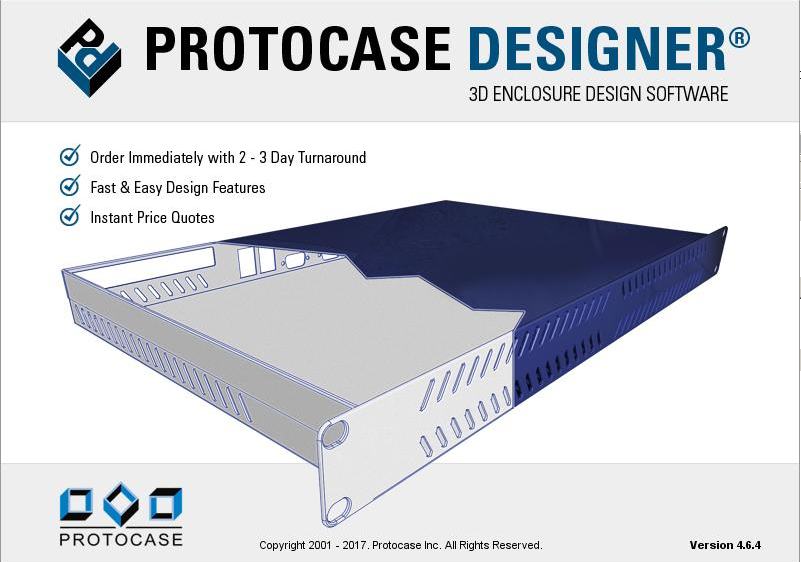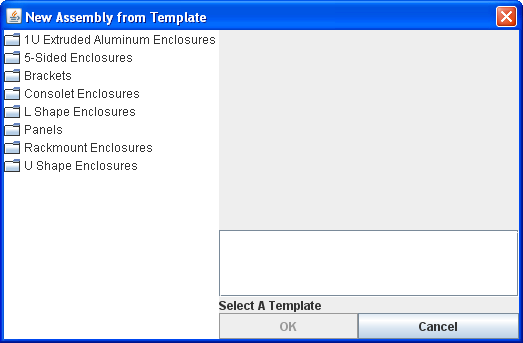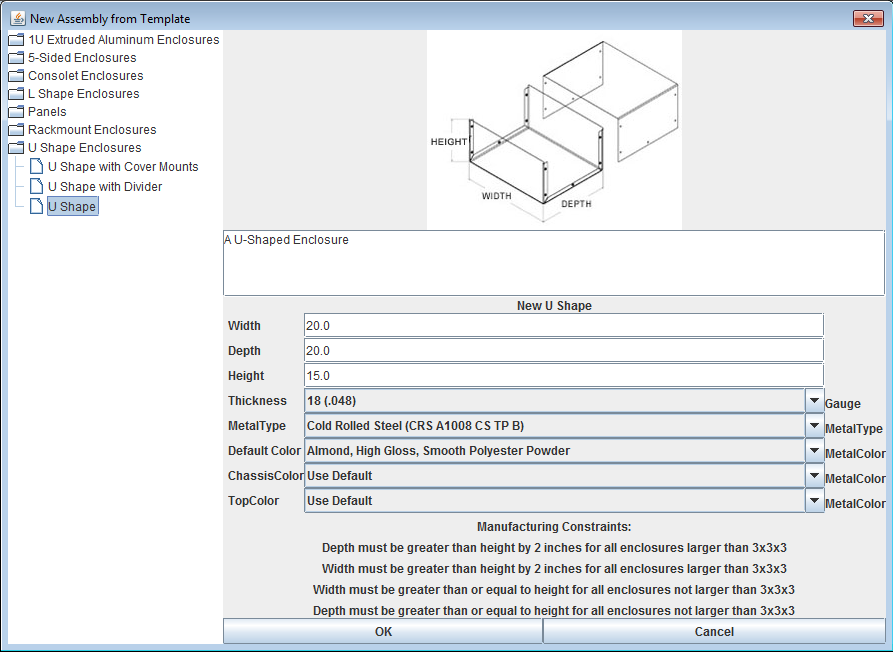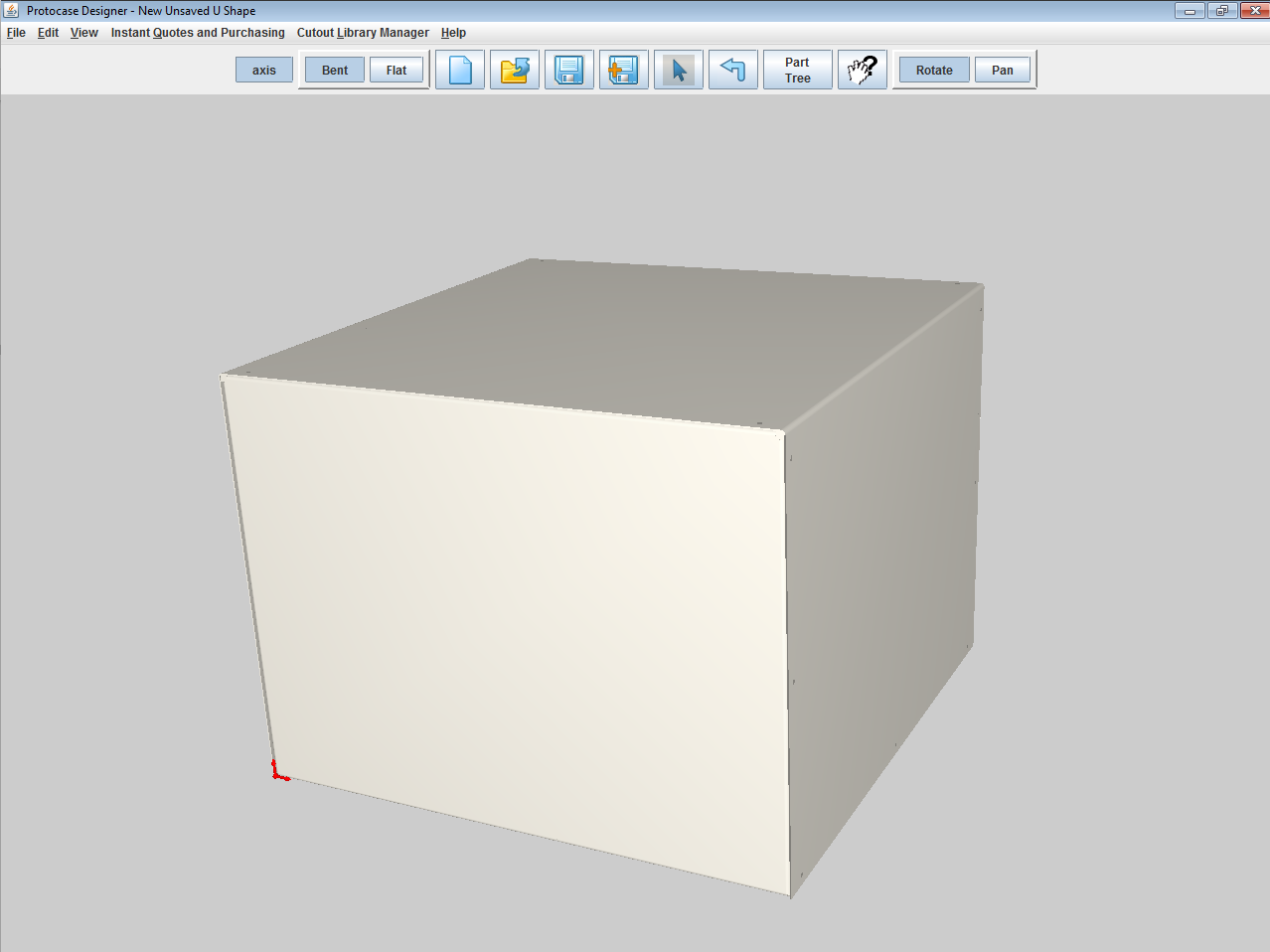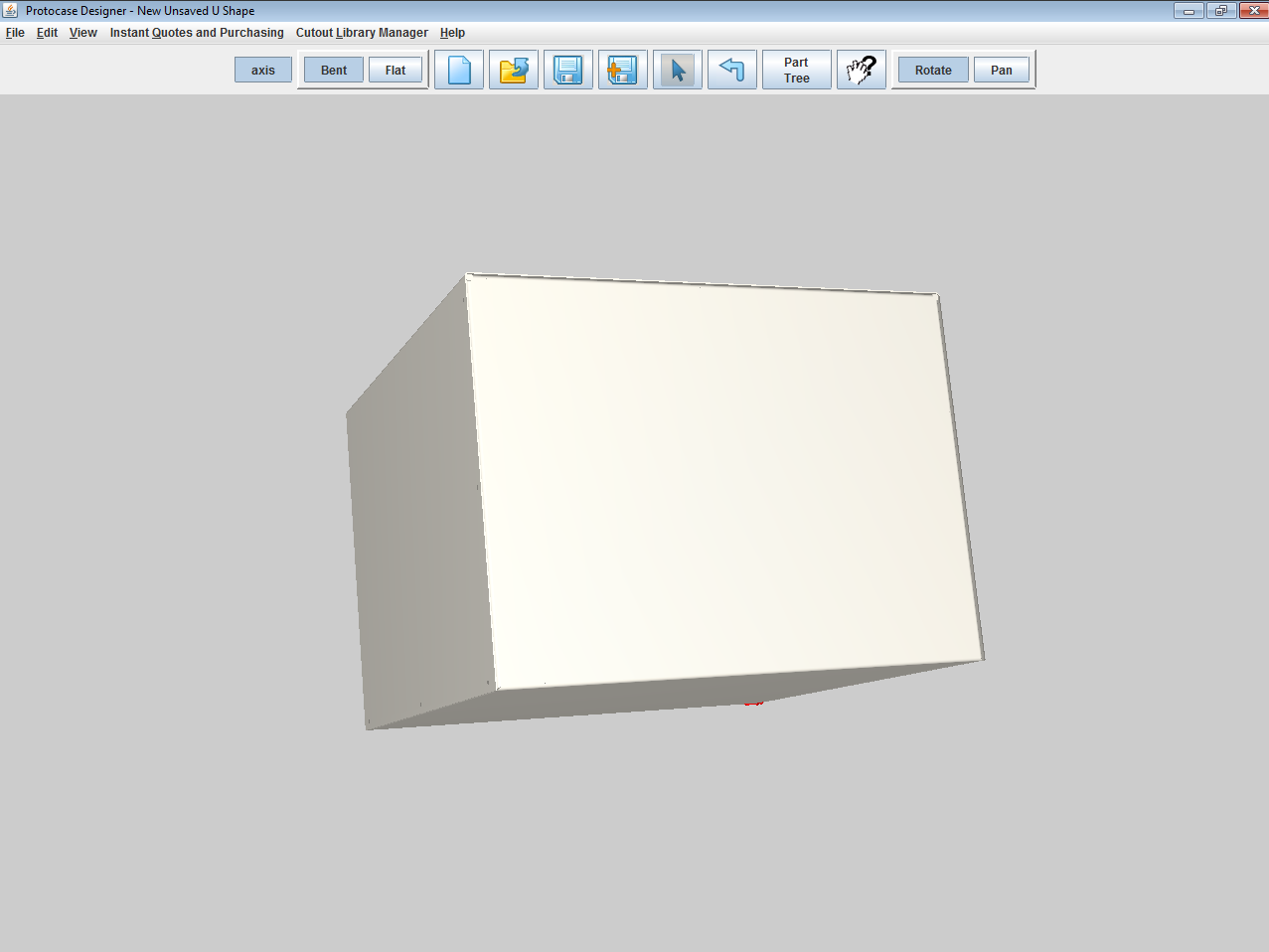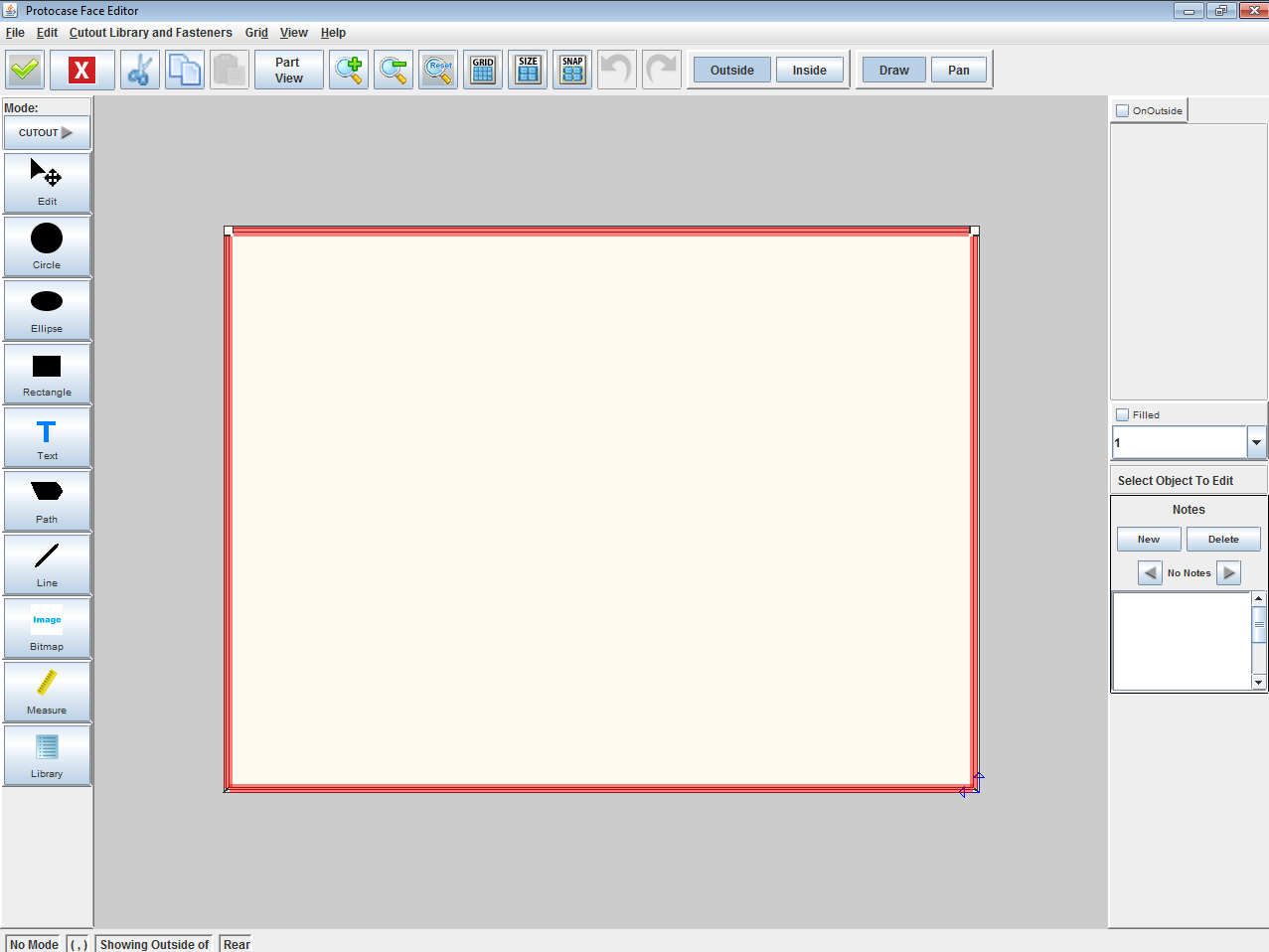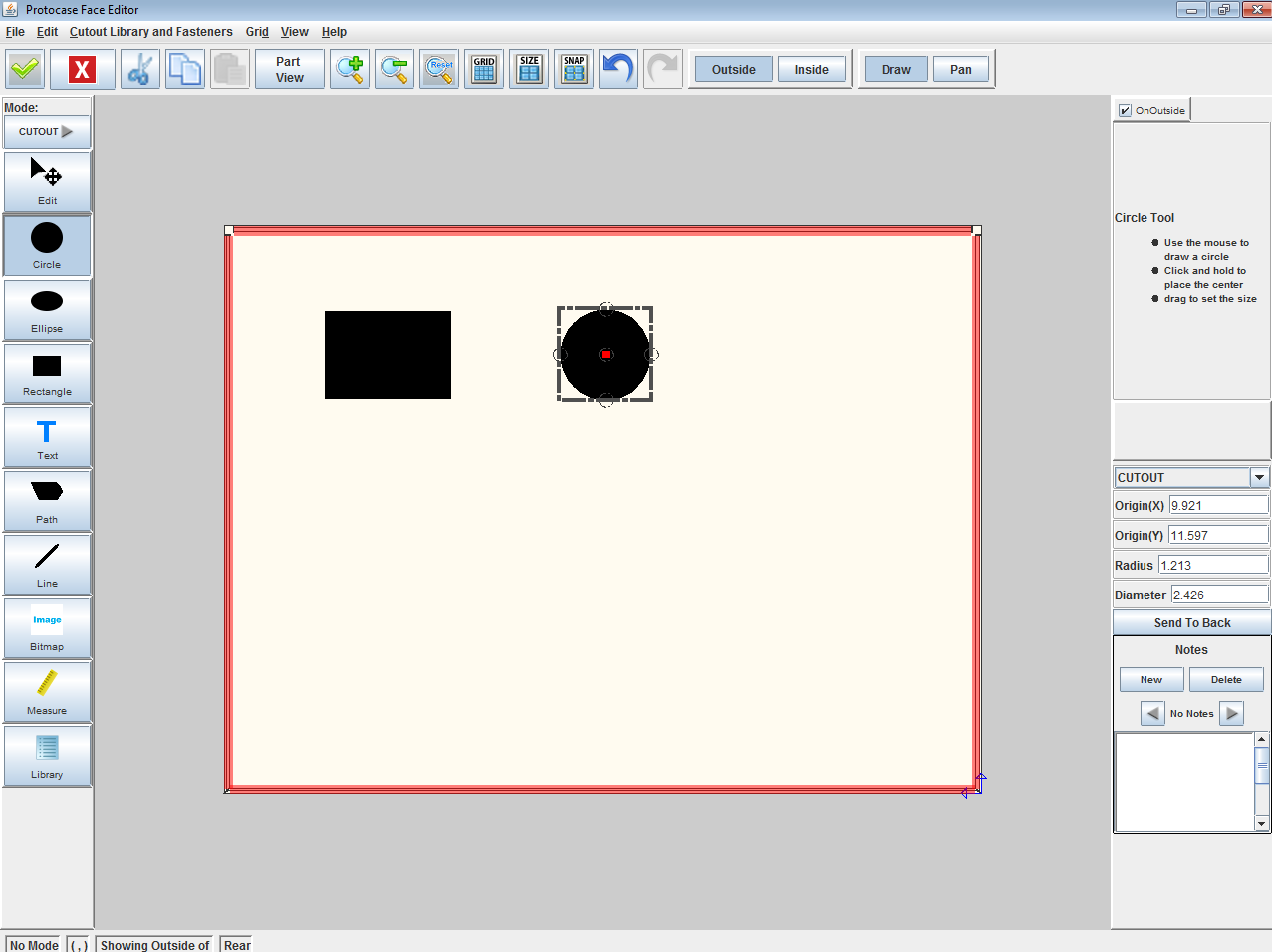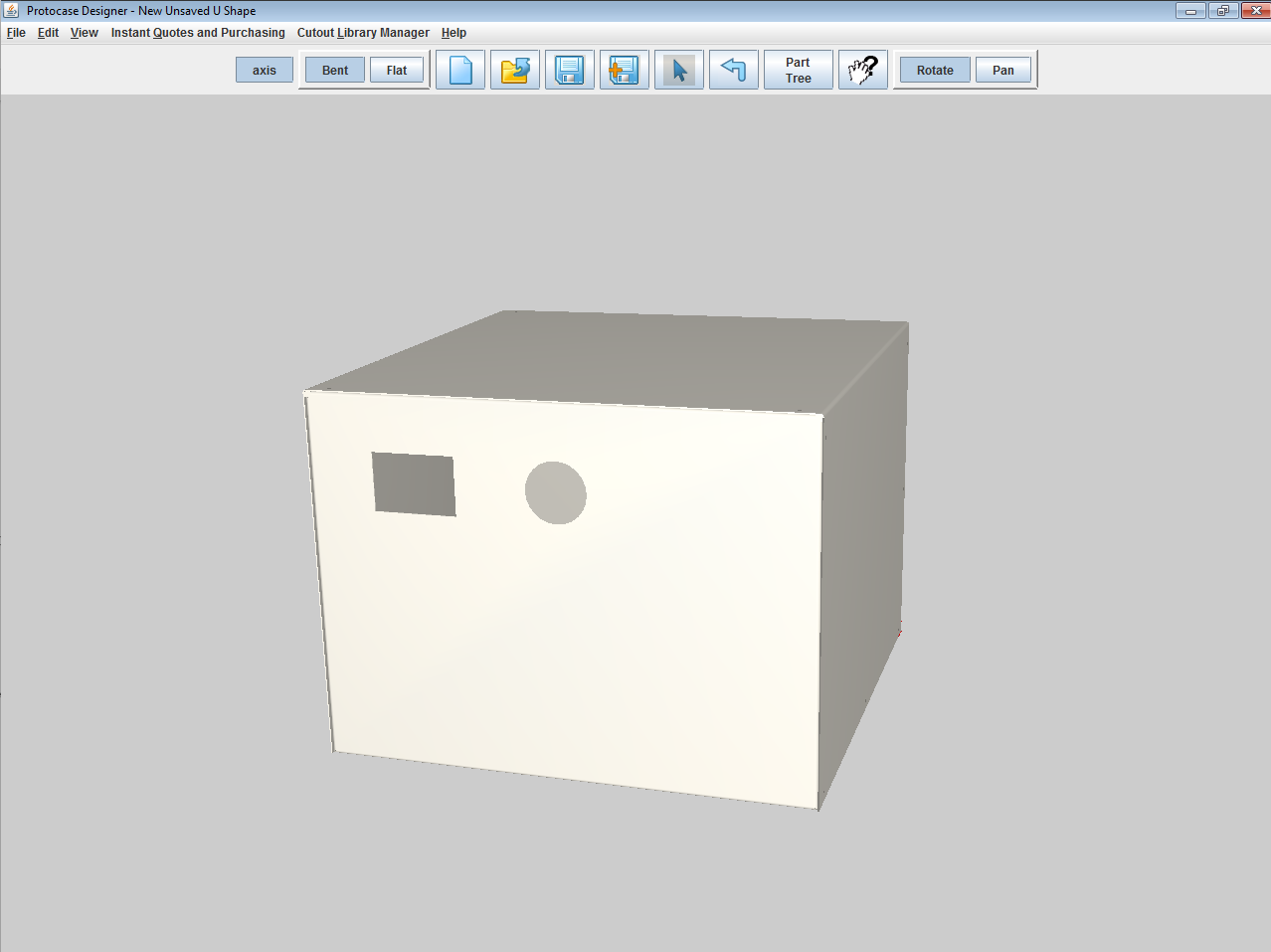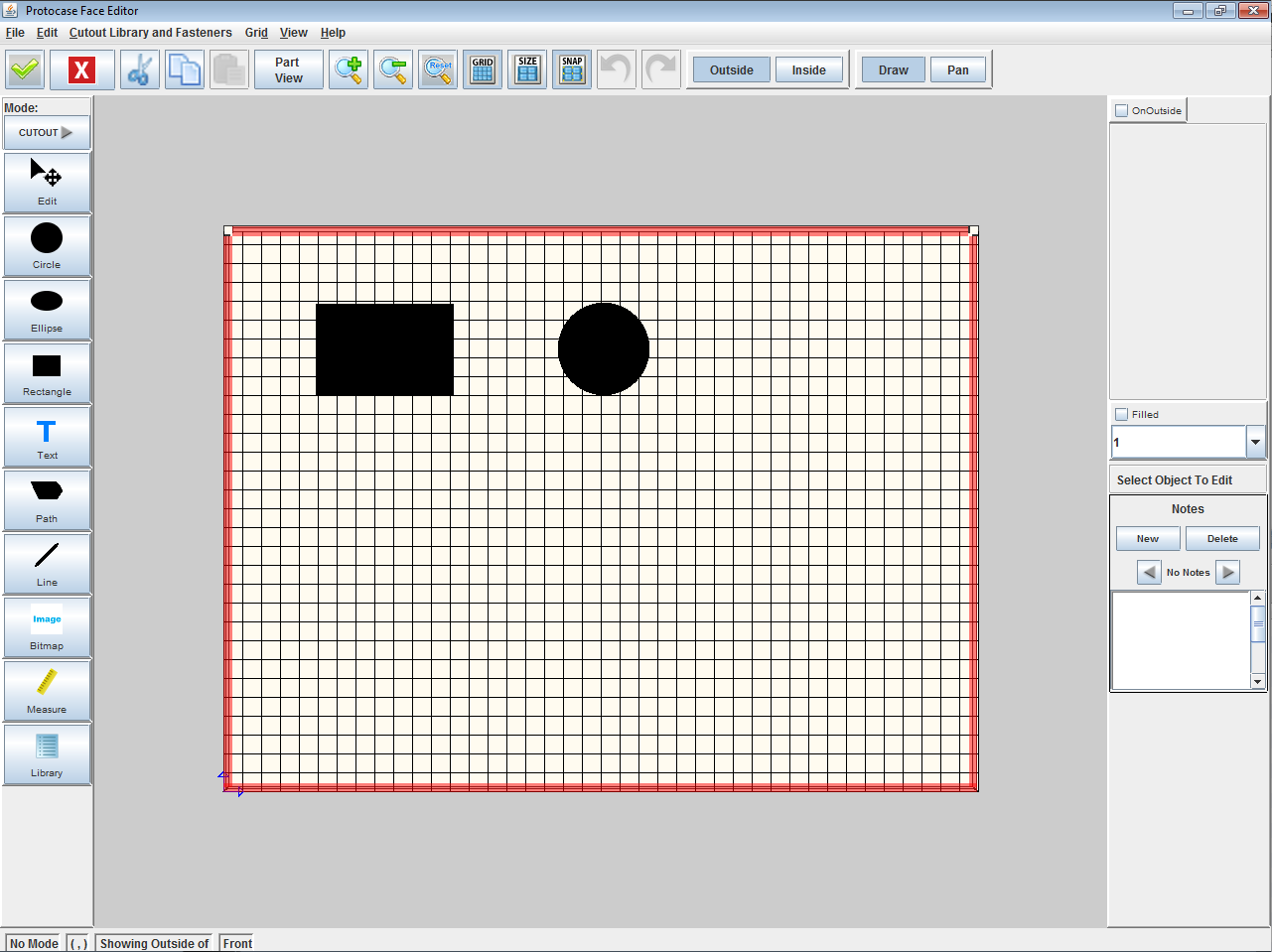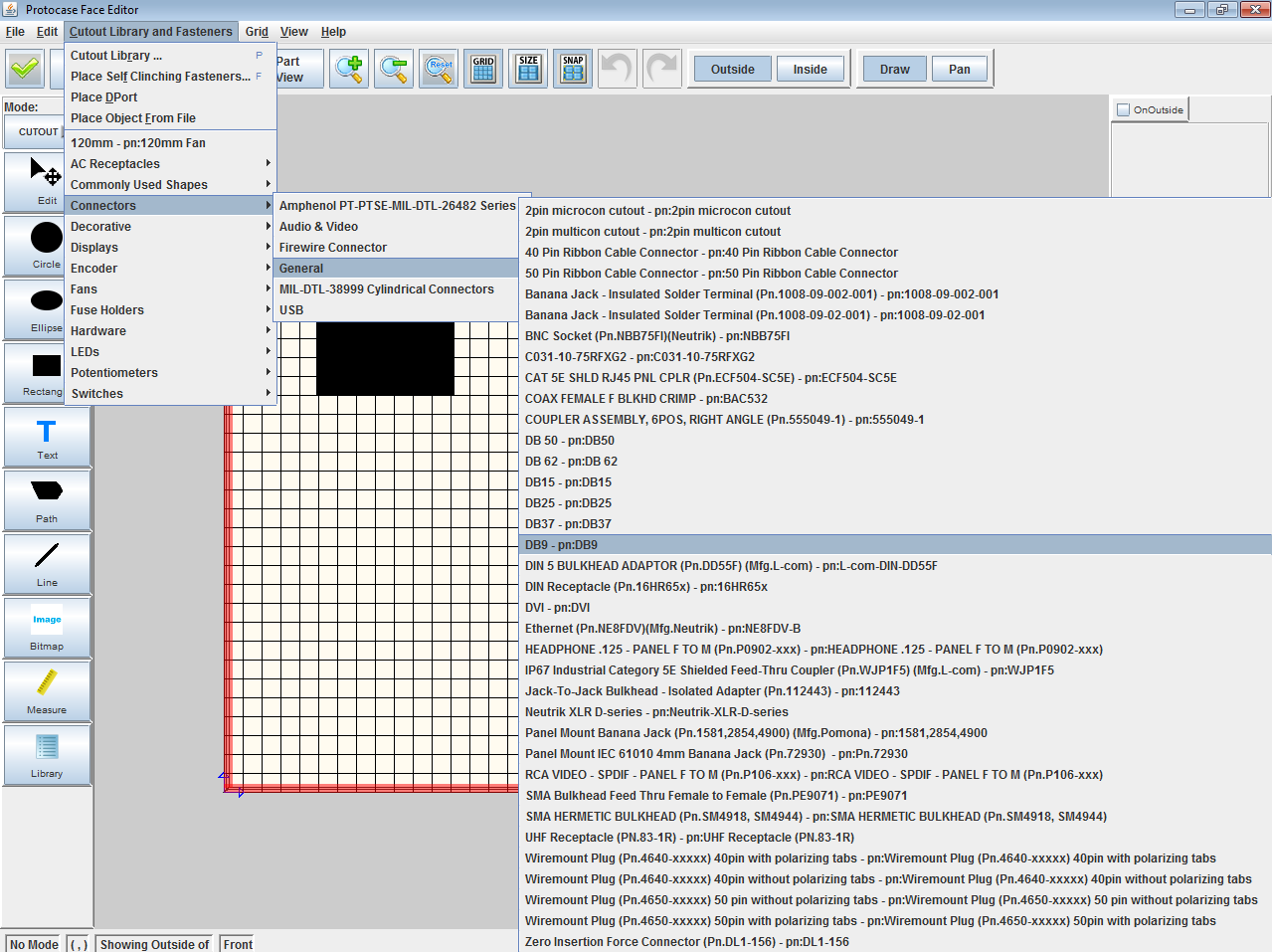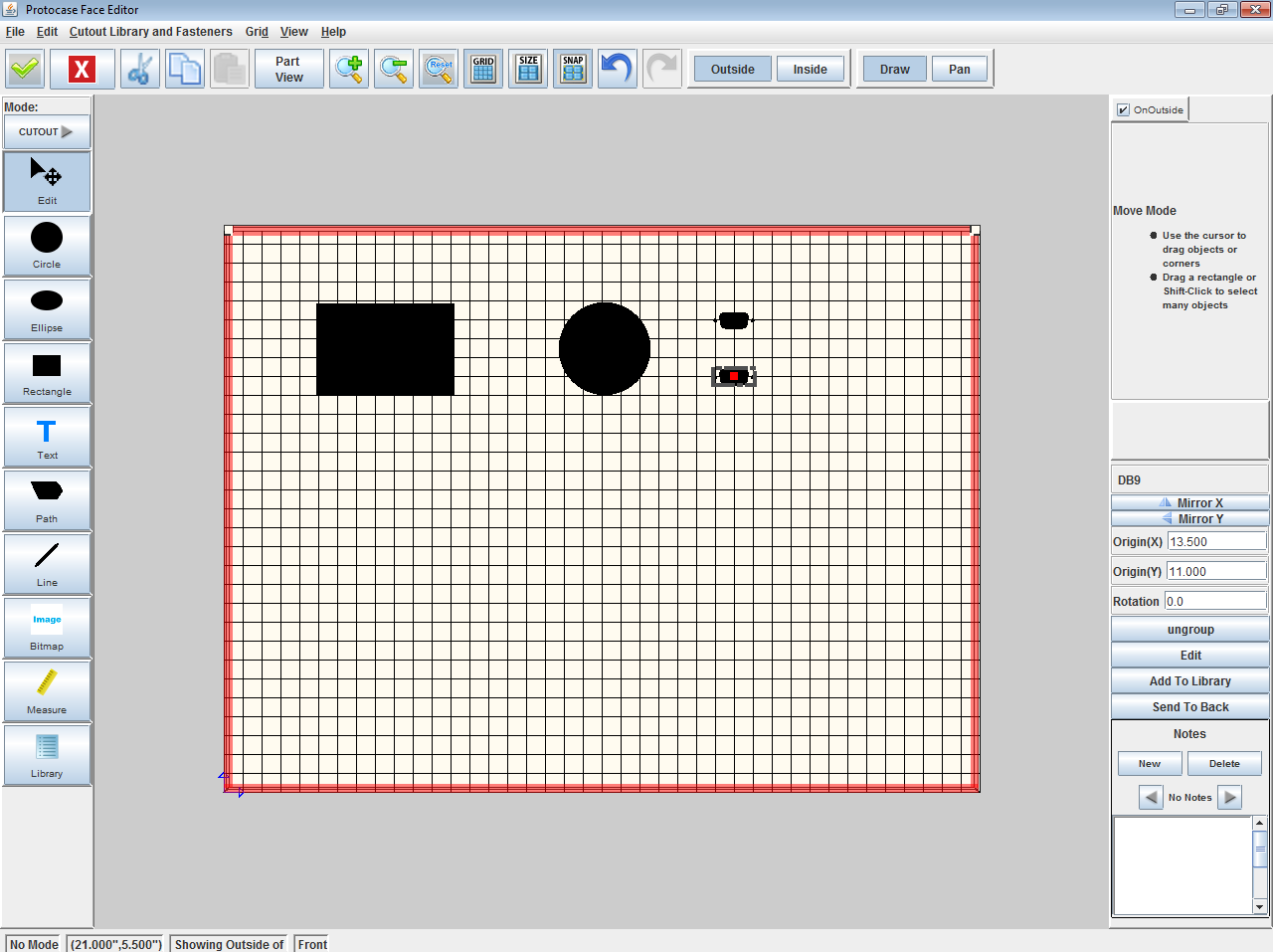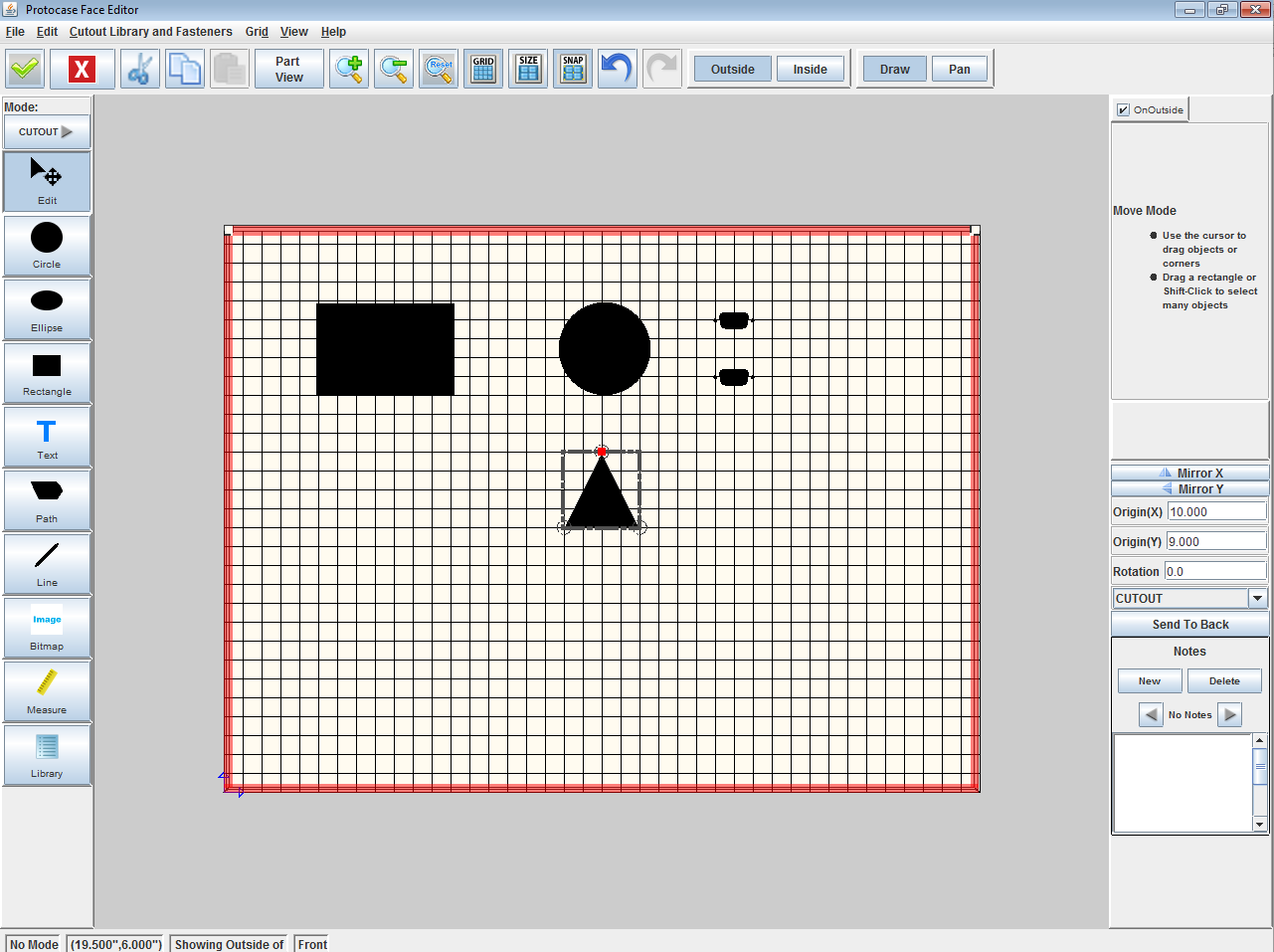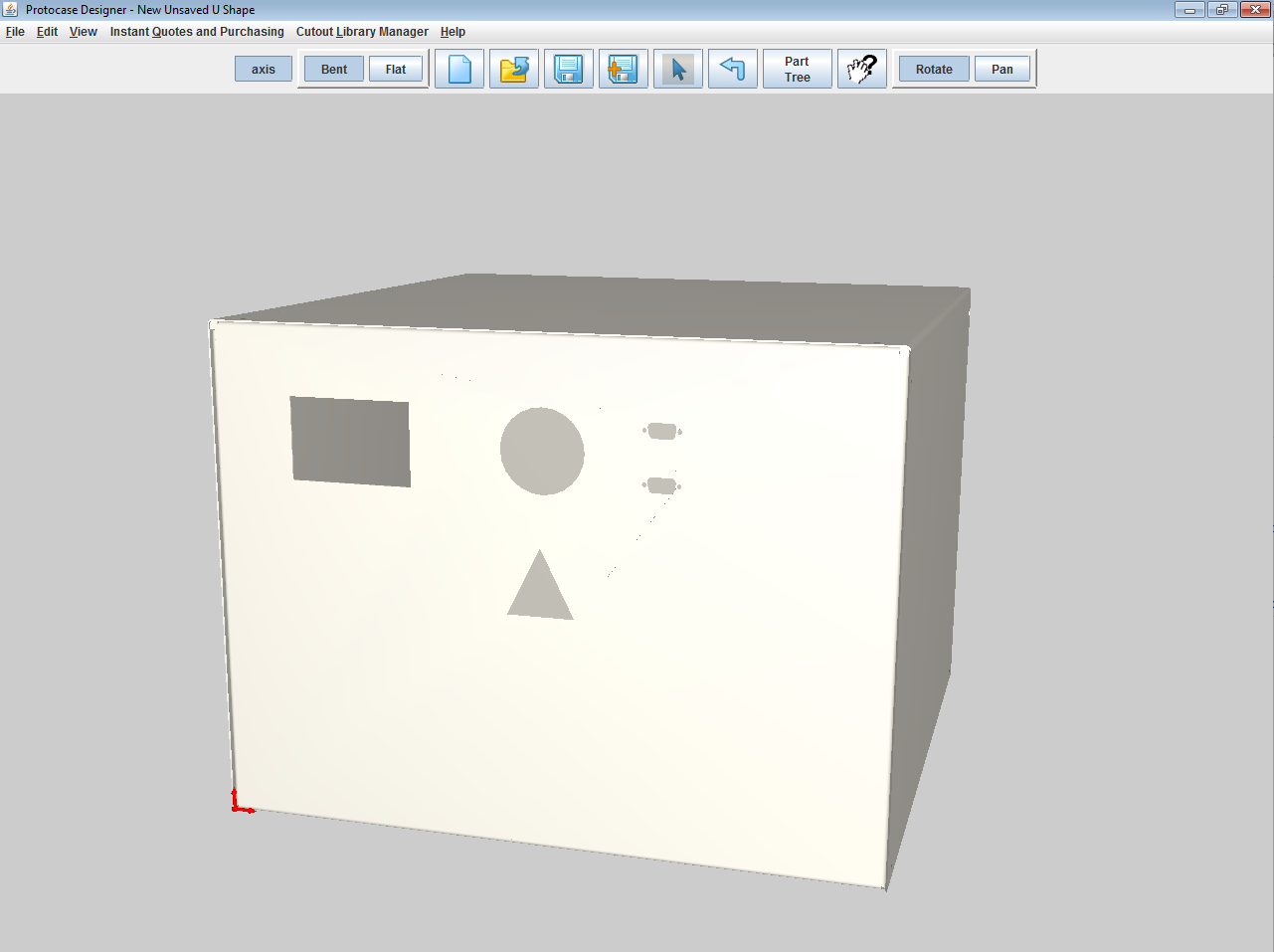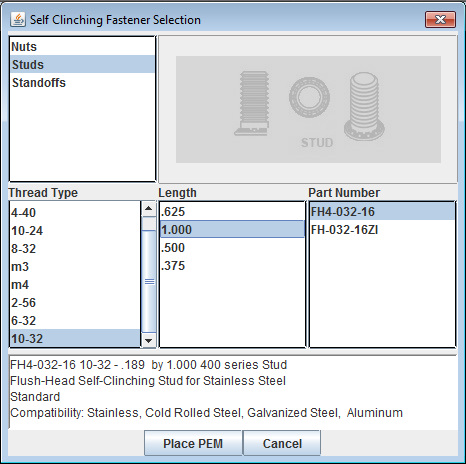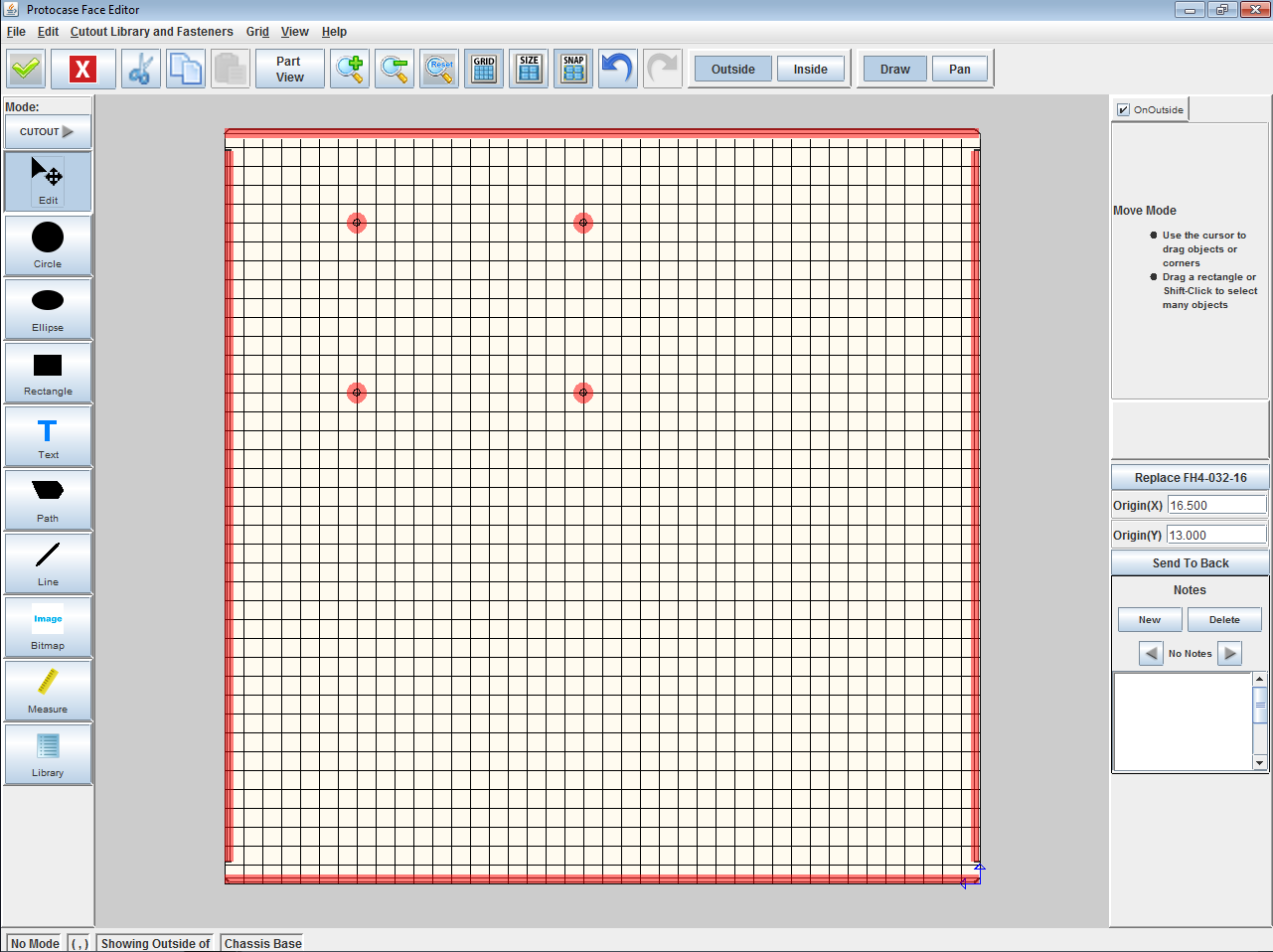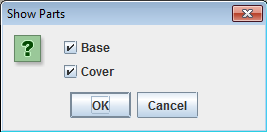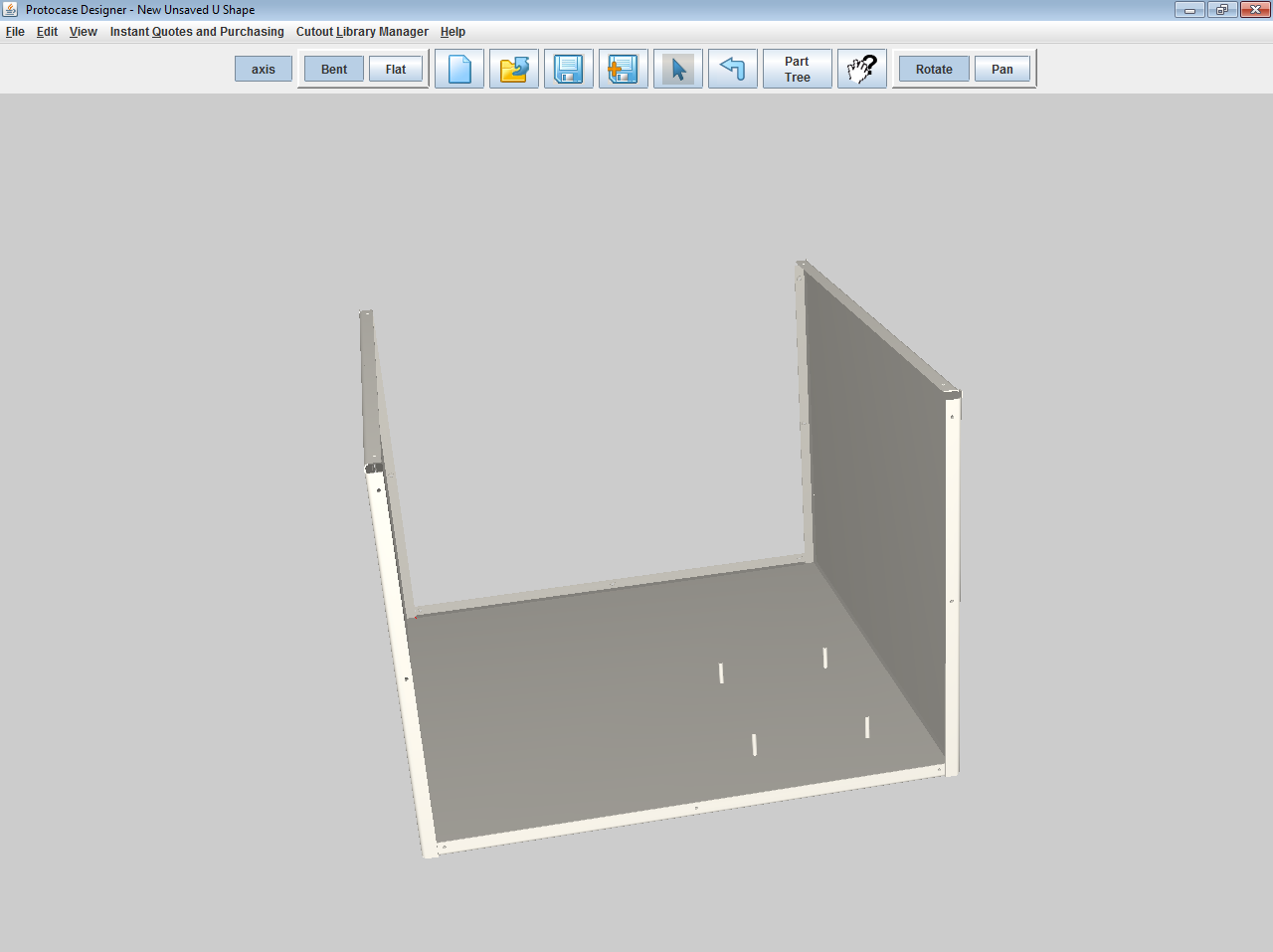Quick Start
This Quick Start guide walks you through the installation of Protocase Designer and its tools for creating, customizing, and quoting/ordering a design. For an overview of Designer features, click here.
Contents
Installing Designer
The installation process is the same for both first-time installations and upgrades.
- Before installing, ensure that your graphics card drivers are compatible with Opengl 1.2+ (such as ATI and NVIDIA) and that they are up to date.
- If you are installing Protocase Designer on a Mac OSX Mountain Lion, please follow the instructions in Installing Designer on a Mac OSX Mountain Lion.
- Close all versions of Protocase Designer before installing a new one. (If you are using Windows, when you try to install Designer while another copy is running, an error occurs and the installer exits.)
- On the [Download page], click the button for the appropriate download format. The download will begin.
- Open the Protocase Designer installer file in your Downloads folder.
- If you have previously installed Designer as the Administrator (or if your anti-virus software requires that you confirm that the file is safe), right-click the installer file in Windows Explorer and choose Run as administrator. (You might have to first choose Show in folder in Google Chrome, or Open containing folder in Firefox.)
- Follow the prompts to install.
- For first-time installations, after launching Designer, you are prompted to register. Be sure to do so, so that you can receive estimates, place an order, and access the online Cutout Library.
See Also:
Creating your enclosure
To begin designing your enclosure, select a template such as Consolet, Bracket, Panel, L shape, Rackmount, or U shape. You then customize various parameters including size, thickness, material, and color. A 3D model of your enclosure is then created, which you can customize further.
- Open Protocase Designer.
- In the Pick an Option to Start dialog box, click New File.
- Select an enclosure category on the left and then select an enclosure type.
- Modify the enclosure parameters including size, thickness, material, and color to meet your design requirements.
- Click OK to view the 3D model.
Customizing your enclosure
To customize the faces of your enclosure, you use the Face Editor, which provides many standard editing tools for creating cutouts, silkscreens, exclusion zones, and construction lines.
Add basic cutouts
- Rotate the model to show the face you want to edit by dragging in the 3D View window.
- Click Edit Face
 on the toolbar.
on the toolbar. - Click the face to edit.
- Select a drawing tool from the Drawing toolbar.
- Draw shapes on the face to create cutouts.
- Click Accept and Close
 on the toolbar. You can then see these cutouts applied to your 3D model.
on the toolbar. You can then see these cutouts applied to your 3D model.
Add built-in cutouts
Protocase Designer offers a variety of built-in cutouts that you can add to your enclosure.
- Click Edit Face
 on the toolbar and click a face to edit.
on the toolbar and click a face to edit. - Click Toggle Grid
 on the toolbar to show the grid and automatically turn on snap to grid.
on the toolbar to show the grid and automatically turn on snap to grid.
- On the Cutout Library and Fasteners menu, point to a category and then click a cutout item.
- Click on the face to place the built-in cutout.
Add custom cutouts
You can create your own custom cutouts using the Path tool.
- Select the Path tool
 on the Drawing toolbar.
on the Drawing toolbar. - Click the face to place points of the path. Click the first point again to finish the path.
- Click Accept and Close
 on the toolbar to view your enclosure.
on the toolbar to view your enclosure.
Note: You can quickly create complex cutouts by merging and/or trimming objects. See Using the Trim and Merge tools to create cutouts for details.
Add hardware
You can easily place hardware on your enclosure to accommodate various components, such as self-clinching fasteners (PEMs) to mount a PCB or handles.
- Click Edit Face
 on the toolbar and click a face to edit.
on the toolbar and click a face to edit. - Click Toggle Grid
 on the toolbar to show the grid and automatically turn on snap to grid.
on the toolbar to show the grid and automatically turn on snap to grid. - On the Cutout Library and Fasteners menu, click Place Self Clinching Fasteners.
- From the Cutout Library, select the type of Self Clinching Fastener and its options
- Click Place PEM and click the face to add the fasteners.
- Continue adding fasteners and select the Edit tool
 when you are done.
when you are done.
- Click Accept and Close
 .
. - Choose Show/Hide Parts from the View menu.
- Click to clear the Cover check box.
- Rotate the model to view the fasteners.
Note: You can also create custom brackets and add them to your enclosure. See Creating and adding brackets for details.
Add silkscreen text
You can add silkscreen text for labeling items on your enclosure. Template:Procedure Note: For images with multiple or gradient colors, specify direct digital printing instead of silkscreening. You can also add dot peening, which is a permanent marking process that does not use ink.
Add silkscreen image
You can add silkscreen images such as logos or other graphics on your enclosure. Template:Procedure Note: You can specify direct digital printing instead of silkscreening for images with multiple or gradient colors. See Adding silkscreening or direct digital printing for details.
Quoting and ordering your enclosure
Once your design is complete you can instantly receive a quote and order your enclosure online. It's quick and easy! Template:Procedure
